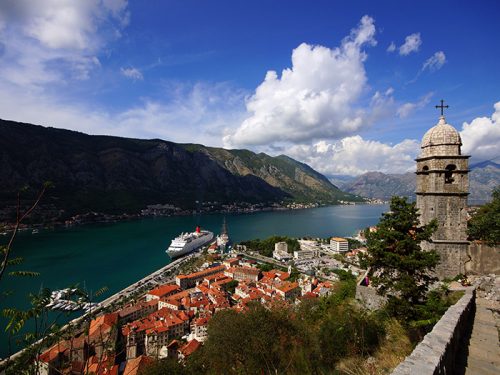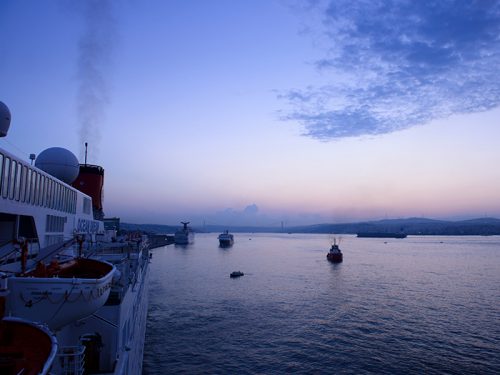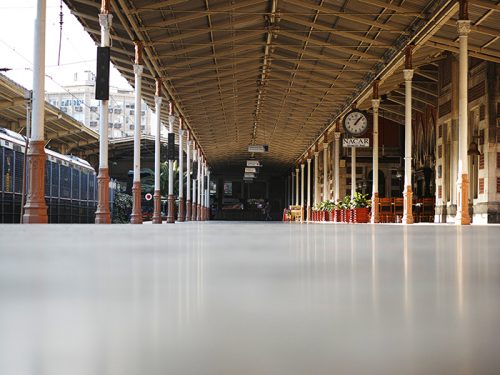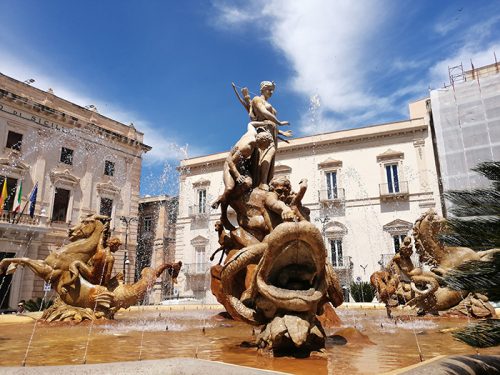The Eastern Mediterranean in the footsteps of the Phoenicians – Highlights of a Cruise Writer
2021/9/27
The Eastern Mediterranean

The Mediterranean, one of the most popular cruise destinations, is divided into east and west by the Italian Peninsula. Today we will introduce the Eastern Mediterranean, with its beautiful islands in the Adriatic and Aegean Seas, the ruins of numerous once prospering civilizations, and the history behind them. Cruise Writer Kanamaru Tomoyoshi explains the charms of this region that has captured the heart of so many people.
Text and composition by Kanamaru Tomoyoshi (Cruise Writer) An experienced traveler who has cruised to all five continents as well as many destinations around Japan, Kanamaru collaborates with the magazines “Cruiseship Collection” and “Cruise,” writing columns and cruise reports.

Phoenicia: Cradle of the Modern Alphabet
“A, B, C, D, E, F, G” or so goes the song. The modern alphabet we use, with all of its 26 letters, has its roots in the Eastern Mediterranean and was created by the Phoenicians. Pioneers in the arts of shipbuilding and navigation, they created a vast trade network along with many colonies from Greece, to Carthage in Northern Africa, extending all the way to the Iberic Peninsula. This way, the Phoenician alphabet made its way to Greece, and became the base for our modern alphabet. Their achievments spread far from the Mediterranean and have lasted until the 21st century. Traveling the East Mediterranean by boat, makes me feel I share the same routes as the ancient Phoenicians.

The Fate of the President who Built the Japan-Egypt Friendship Bridge
When traveling around the world on a Northern Hemisphere Voyage you will pass through the Suez Canal before entering the Mediterranean Sea. There, you will see the “Japan-Egypt Friendship Bridge,” constructed with the aid of the Japanese Government. The decision to build it was made in 1995, and it was completed in October 2001. When crossing under, you will see in the center the Egyptian and Japanese national flags. This bridge is also known as the Mubarak Peace Bridge, in reference to the President who decided its construction. However, this President did not have a peaceful end, forced to step down in 2011 during the Arab Spring.

The Magnificent Orient Express in Istanbul
Asia and Europe. As the ship enters Istanbul we can watch the shores of both of these worlds. Here, the Orient Express used to connect both continents. Starting operations in 1889, it first connected Paris and Istanbul. One year later on November 3, 1890, the station of Sirkeci in Istanbul was opened. Before the Second World War, the Orient Express connected Western and Eastern Europe with Asia, and was loved by celebrities at the time for its glamour. However, its Paris to Istanbul route stopped in 1977. Nowadays, the Sirkeci station has been remodeled into a restaurant and train museum, both telling the history of the Orient Express.

The “Queen of Mystery”‘s journey to the Middle East led to marriage and a masterpiece
The “queen of mysteries,” Agatha Christie (1890-1976), was born in the United Kingdom in the same year that Sirkedji station was opened. She travelled to the Middle East on the Orient Express in 1930, and met archaeologist Max Mallowan on her journey. Having been divorced two years earlier, Agatha married Max and they continued to travel regularly on the Orient Express. These journeys became the basis for her immortal novel, Murder on the Orient Express (1934). She wrote this at the Pera Palace Hotel, which was founded in 1892 and was the first hotel to welcome passengers arriving in Istanbul on the Orient Express. Its afternoon tea is not to be missed!

Is the maritime utopia of Atlantis on the isle of Santorini?
The phantom continent of Atlantis. Could that be the isle of Santorini? Around 1628 BC, an underwater volcano caused a huge explosion that formed the caldera of the present-day Santorini. Ancient Greek philosopher Plato (427 BC – 347 BC) claimed in his writings that the eruption sank a huge oceanic utopia that had once existed, and this became the basis of the later legend of Atlantis. In 1956, 2,400 years after the eruption, Greek seismologists discovered the remains of a port city on the southern island of Santorini and theorised that the island could have been Atlantis. A cruise on the Aegean Sea is a great way to reminisce about this fantastic utopia.

Archimedes, who troubled the Romans with his inventions
Sicily has a complex history, having been ruled by many different peoples and nations since ancient times. The colonial city of Syracuse was ruled by the Phoenicians and later by the Greeks. It is also known as the birthplace of the scientist and philosopher Archimedes (c. 287 BC – c. 212 BC). Syracuse sided with Carthage in the Second Punic War between Rome and the Phoenician colony of Carthage. He developed a number of military weapons which greatly troubled the Romans, but was killed by invading Roman soldiers while immersed in his research. Syracuse soon fell afterwards. Archimedes’ last words were, “Do not disturb my circles!”
PHOTO: PEACEBOAT, Kajiura Takashi, Kazashito Nakamura, Nakamura Mitsutoshi, Suzuki Shoichi
